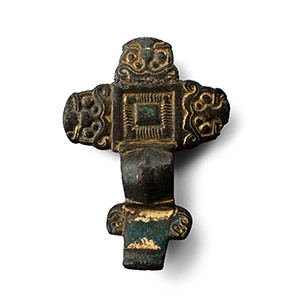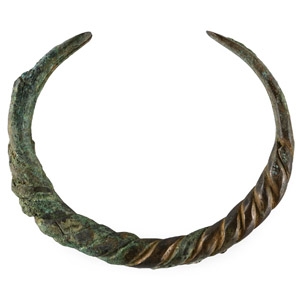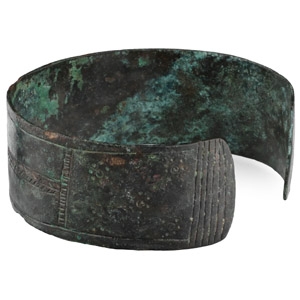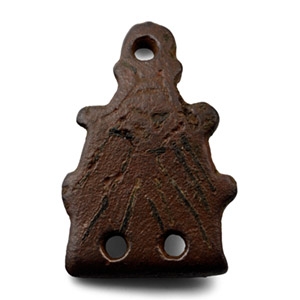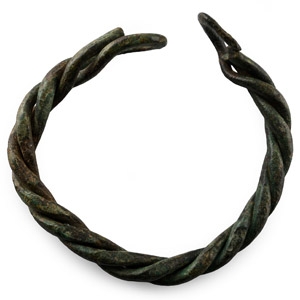Home > Auctions > 9 - 17 September 2025
Ancient Art, Antiquities, Books, Natural History & Coins
Formerly from a collection of a Kent, UK, collector established from the 1990s.
Property of a private collector, West London, UK.
This lot is accompanied by an illustrated lot declaration signed by the Head of the Antiquities Department, Dr Raffaele D'Amato.
Ex German art market, 2000s.
Acquired from an EU collector living in London.
From the collection of a Surrey, UK, gentleman.
This lot is accompanied by an illustrated lot declaration signed by the Head of the Antiquities Department, Dr Raffaele D'Amato.
Private collection formed in Europe in the 1980s.
Westminster collection, central London, UK.
This lot is accompanied by an illustrated lot declaration signed by the Head of the Antiquities Department, Dr Raffaele D'Amato.
Found Weston Colville, Cambridgeshire, UK.
This lot is accompanied by an illustrated lot declaration signed by the Head of the Antiquities Department, Dr Raffaele D'Amato.
Cf. Martin, T., The Cruciform Brooch and Anglo-Saxon England, Woodbridge, 2015, p.78-9.
The florid type of cruciform brooch stands at the end of the series and probably dates to the middle of the 6th century according to the most recent discussion (Martin, 2015). T
From an East Sussex, UK, private collection; acquired 1980s-1990s.
This lot is accompanied by an illustrated lot declaration signed by the Head of the Antiquities Department, Dr Raffaele D'Amato.
UK private collection before 2000.
Acquired on the UK art market.
Private collection, London, UK.
This lot is accompanied by an illustrated lot declaration signed by the Head of the Antiquities Department, Dr Raffaele D'Amato.
Found East Anglia, UK.
This lot is accompanied by an illustrated lot declaration signed by the Head of the Antiquities Department, Dr Raffaele D'Amato.
Cf. Avent, R. & Evison, V.I., Anglo-Saxon Button Brooches in Archaeologia, vol.CVII, 1982, item 18.7, for type.
Found UK, March 1998.
From the collection of a gentleman from the South West of England, his collection established from the 1990s.
This lot is accompanied by an illustrated lot declaration signed by the Head of the Antiquities Department, Dr Raffaele D'Amato.
Cf. West, S., A Corpus of Anglo-Saxon Finds From Suffolk, East Anglian Archaeology 84, Ipswich, 1998, item 153(1).
Found Brough, Lincolnshire, UK.
This lot is accompanied by an illustrated lot declaration signed by the Head of the Antiquities Department, Dr Raffaele D'Amato.
Cf. Williams, D., Late Saxon Stirrup-Strap Mounts, York, 1997, item 14, for type.
Found Weston Colville, Cambridgeshire, UK.
This lot is accompanied by an illustrated lot declaration signed by the Head of the Antiquities Department, Dr Raffaele D'Amato.
Cf. See Hines, J., A New Corpus of Anglo-Saxon Great Square-Headed Brooches, London, 1997, items 13(a) Tuxford (with disc-on-bow feature), 36(b) Alveston manor (vertical bar and lozenge panels on headplate).
Acquired on the UK art market circa 2005.
From an old North Country, UK, collection.
This lot is accompanied by an illustrated lot declaration signed by the Head of the Antiquities Department, Dr Raffaele D'Amato.
From the collection of a late Japanese collector, 1970s.
This lot is accompanied by an illustrated lot declaration signed by the Head of the Antiquities Department, Dr Raffaele D'Amato.
This amulet was believed to offer protection against 'Elfshot'. The attack of elves was believed responsible for mysterious suffering in men and livestock: sudden shooting pains localised to a particular area of the body, such as in rheumatism, arthritis or muscle stitches or cramps. Elves were thought to shoot darts or arrows where such pains had no obvious external cause. Belief in elfshot persisted into the 20th century in rural areas, and as proof country folk would sometimes find small arrowheads (the remains of Neolithic or Mesolithic flints, or naturally-occurring spear-shaped stones) that were believed to be the magical weapons that caused the afflictions. Belief in elfshot began in the Pagan Germanic period.
1465 - 1476 of 3897 LOTS




